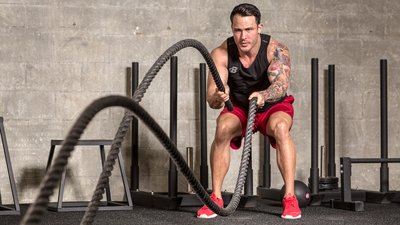Running along the beach or bicycling in the mountains are amazing experiences that make the physical activity seem secondary because there are million-dollar views everywhere you look. It makes you want to keep going just to live the experience a little bit longer.
That same cardio activity in the gym? It can be agonizing work that can't end soon enough. That's one reason fitness enthusiasts have been choosing to cut their cardio gym time in half by employing what's called high-intensity interval training (HIIT). You can reap equal or even greater health-and-fitness benefits than you'd get from double the amount of steady-state cardio.
But of course, there's a catch. If you're new to HIIT, it refers to alternating rounds of intense—like, really intense—bursts of activity with lower-intensity recovery periods. If you're doing it right, every round of work is an ordeal you can't wait to be finished with.
Fortunately, there's a reward for this grueling undertaking. Researchers have been digging deep into HIIT in recent years, and they've discovered a slew of ways it can help you transform your body and improve crucial health markers.
Let's take a closer look at the benefits of HIIT and see what protocol is best for you!
1. HIIT Boosts Your Vo2
The traditional approach to improving cardiovascular fitness has been to increase the volume or duration of exercise. This means longer runs, longer bike rides, or extended periods of time on the elliptical. But science is showing that's not the only way.
Perhaps the most widely accepted standard of cardiovascular fitness is VO2 max, or maximal oxygen consumption. Think of it as your body's engine. The bigger it is, the more efficient you are at any level of exertion—and the more powerful you are overall.
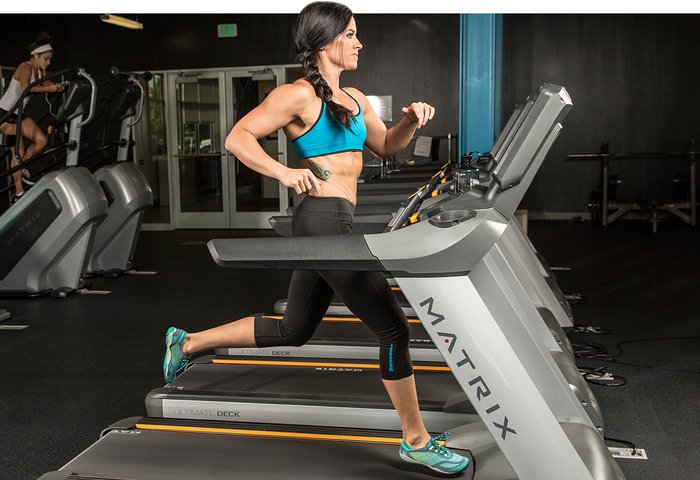
A higher vo2 max means your body is more efficient at delivering oxygen to your working muscles, which in turn allows you to produce more energy and perform more work. It's one of those strengths that pays off in countless ways.
HIIT has made positive headlines thanks to a number of studies showing that a relatively small amount of it is just as good at improving maximal oxygen consumption, or VO2 max, as longer duration, continuous exercise.[1-5]
A higher VO2 max means your body is more efficient at delivering oxygen to your working muscles, which in turn allows you to produce more energy and perform more work. It's one of those strengths that pays off in countless ways.
2. HIIT Burns More Fat And Calories In Less Time
We've all heard of the fat-burning zone with steady-state cardio. Some of us have even gone a step farther and started our day there...for an hour, fasted, while the rest of the world slept. Ah, the memories.
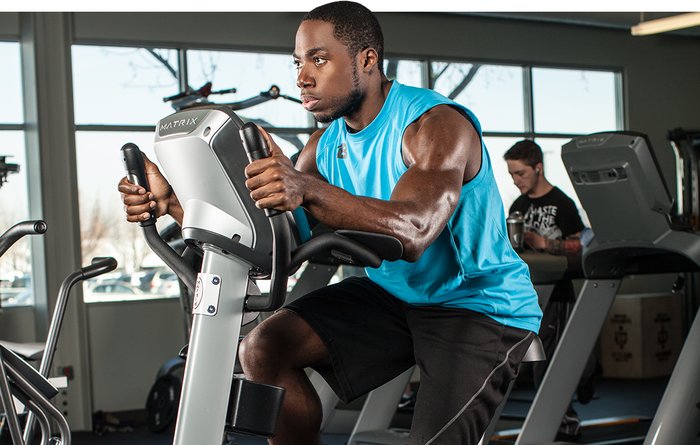
While it's true that lower-intensity cardio burns a greater percentage of calories from fat, the total calories burned and fat breakdown are greater at higher intensities. How much greater? Researchers from McMaster University found that it took just 10 minutes of HIIT to burn the same amount of calories as 50 minutes of steady-state exercise.[7]
Another benefit of HIIT is its potential to excess post-exercise oxygen consumption (EPOC). Following an exercise session, oxygen consumption stays elevated as the body tries to restore the body's physiological and metabolic pathways back to pre-exercise levels. Getting them there requires more calories to be burned. EPOC is related to exercise intensity; the harder you work, the harder the body has to work to recover. HIIT can lead to greater EPOC compared to lower-intensity activity, allowing you to burn extra calories long after your workout is done.[8]
HIIT can also serve to increase fat oxidation, which is the body's ability to break down and utilize fat as an energy source. A study from Canadian researchers found that just six weeks of HIIT increased fat oxidation and decreased the reliance on carbohydrates during exercise.[9]
Taken together, these studies can help to explain why more researchers have observed dramatic body-composition changes taking place in HIIT studies in a fraction of the time they take with steady-state cardio.[10-11]
3. HIIT Improves Your Overall Health
The words "high-intensity" may bring to mind images like athletes doing shuttle runs or fitness models gasping for air on an stationary bike. But make no mistake: HIIT isn't just good for the super fit. It's effective at improving health and fitness in a range of populations, including those with type 2 diabetes or heart disease.
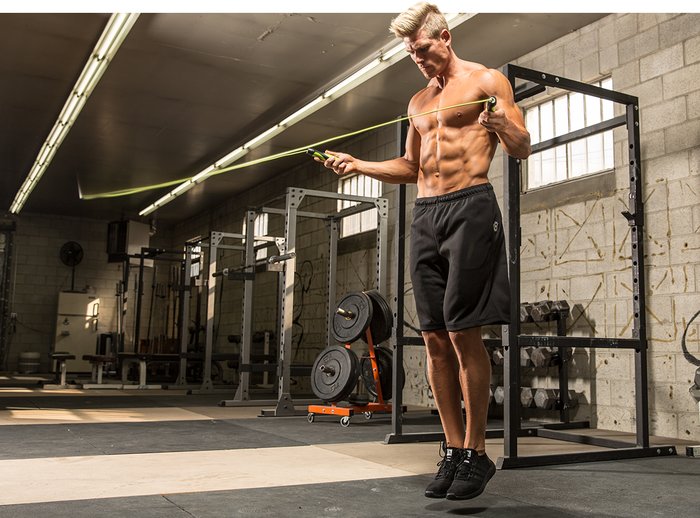
Make no mistake: hiit isn't just good for the super fit. It's effective at improving health and fitness in a range of populations, including those with type 2 diabetes or heart disease.
Research published in Diabetes Care found significant improvements in glycemic control, body mass, and abdominal fat in type 2 diabetics following 12 weeks of HIIT.[12] Additionally, researchers out of the University of South Wales in Sydney, Australia, found improvements in resting heart rate, stroke volume, blood pressure, and arterial stiffness after 12-weeks of HIIT.[6]
Couple that with other studies finding improvements in cholesterol levels following 10 weeks of HIIT, and you've got a time-efficient way to improve your overall health (and look better naked).[13]
4. HIIT Fights Off Fatigue
Sure, HIIT can improve your cardio performance. Endurance athletes know this—they've been doing intervals as part of their training for decades. However, the benefits can be carried over to the weight room as well.
We're all familiar with that burning sensation that builds up in your muscles after a few sets of any weighted exercise. While many wrongly contribute the burn to lactic acid, it's actually caused by the accumulation of hydrogen ions. This buildup of hydrogen ions can lower your body's pH levels, leading to fatigue and the inability of your muscles to contract.
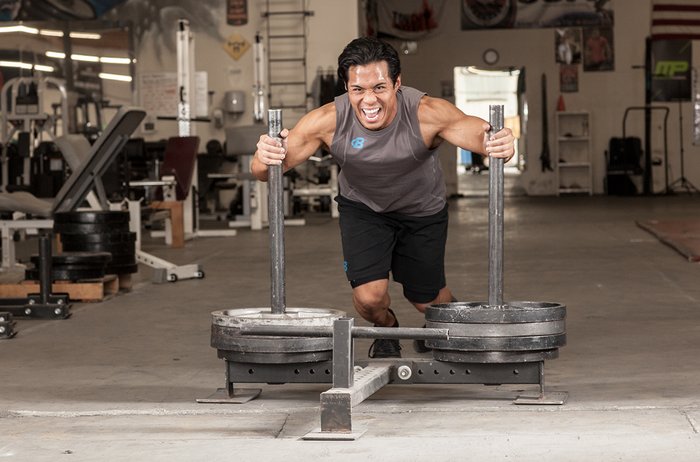
Sure, hiit can improve your cardio performance. Endurance athletes know this—they've been doing intervals as part of their training for decades. However, the benefits can be carried over to the weight room as well.
With steady-state cardio, you typically don't reach intensities high enough to challenge—and thus improve—your body's ability to buffer or neutralize hydrogen ions.[14] However, HIIT appears to do the trick. A study publish in the European Journal of Applied Physiology found that just six sessions of HIIT spread across four weeks improved skeletal muscle buffering capacity, time to fatigue, peak power output, and 40K time trials in trained cyclists.[15]
While you may not be too concerned with your 40K time-trial performance, increasing your buffering capacity has other benefits that may have more appeal. For one, it means you can handle higher intensities and durations of exercise without getting fatigued.
For gym rats, that can equate to having some gas in the tank at the end of the workout for extra sets, or for condensing your entire workout into a shorter period of time. In either case, it can mean giving your body a stronger stimulus to grow!
5. HIIT Is More Fun
You may be able to stomach pedaling a stationary for an hour and not going anywhere. But do you like it? Note: Answering "It depends on what's on TV" doesn't count.
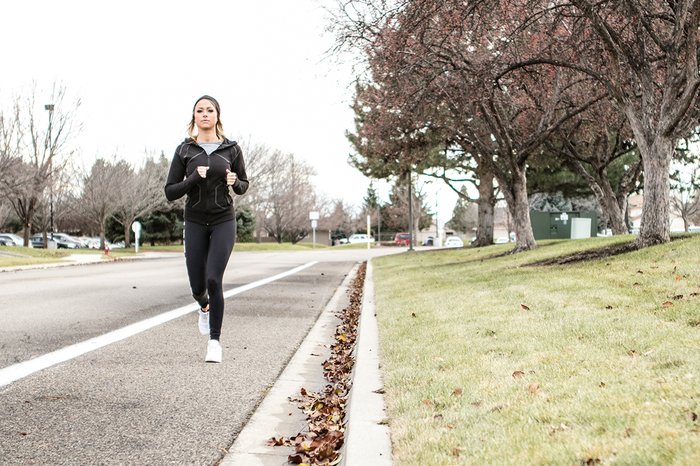
The minimal time commitment and overall enjoyment could mean you're more likely to stick to your program long enough to see results!
HIIT, on the other hand, has been shown in multiple studies to be more enjoyable than steady-state cardio. A study published in the Journal of Sports Sciences found that people tended to enjoy shorter, high-intensity bouts of exercise more than longer, steady-state activity.[16] Additionally, research out of University of North Carolina (Chapel Hill) reported higher levels of enjoyment doing HIIT compared to continuous exercise in overweight and obese subjects.[17]
The minimal time commitment and overall enjoyment could mean you're more likely to stick to your program long enough to see results!
When To Schedule Your HIIT Sessions
The intensity of HIIT has both an upside and a downside. Although it's time efficient, interval training tends to be much more stressful than lowerintensity steady-state cardio, which makes its placement in your workout program important.
Placing it right after a lower-body workout probably isn't a great idea. Your body won't be recovered adequately from the lifting session to reach the desired intensity for long enough to see true adaptations to HIIT.
Likewise, you want your HIIT training to compliment, not compound, the training stress caused by strength training. Many athletes who resistance train are afraid that cardio will "interfere" with their gains. However, the amount of interference between cardio and resistance training is more closely related to the volume of endurance training you're doing than the intensity.[17,18]
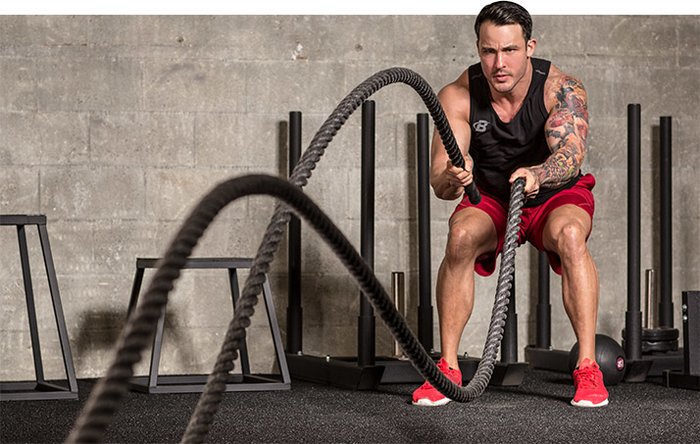
It's wise to save your hiit for days where your lifting sessions don't include lower-body exercise. Chest and arm days would work best (depending on what type of hiit you do, of course).
Still, because HIIT often hits the same muscle fibers as strength training, it's wise to save your HIIT for days where your lifting sessions don't include lower-body exercise. Chest and arm days would work best (depending on what type of HIIT you do, of course).
If you absolutely must do your HIIT on lower-body days, give yourself about a recovery window of about 6-8 hours after weights before you HIIT it. This will give you a long enough time to recover and fuel your muscles, but not so long that DOMS starts to set in.
HIIT: How To Start
There are multiple ways you can do HIIT, but generally speaking, work intervals should be around 20-90 seconds, with a work-to-rest ratio of 1:1 to 1:3. The duration of the work interval is directly related to intensity: the higher the intensity, the shorter the duration. If you've got access to a heart-rate monitor, make sure to keep the intensity level around 85 percent or higher of your max heart rate during your intervals.
You don't have to get super fancy with your workouts, either. A solid HIIT workout can done almost anywhere, using any piece of equipment, in a number of different interval arrangements.
Here's an easy template to follow:
Mode/Duration/Rest/Rounds
- Treadmill sprints: 45 sec., 75 sec. rest, 8-10 rounds
- Stationary bike: 30 sec., 60 sec. rest, 8-10 rounds
- Prowler (sled) push: 30 yards, 30-45 sec., 10-12 rounds
- Battle ropes: 20 sec., 40 sec. rest, 6-8 rounds
- Jump rope: 60 sec., 30 sec. rest, 10 rounds
To be clear, there's absolutely nothing wrong with doing steady-state exercise. And despite what some people say online, you don't have to pick one style or the other like you'd pick a political party. There can be room in your life for both a brisk hike and a sweat-drenched rower workout.
Just be sure to up the intensity some of the time, because the benefits are too good to resist!
References
- Thomas, T. R., Adeniran, S. B., Iltis, P. W., Aquiar, C. A., & Albers, J. J. (1985). Effects of interval and continuous running on HDL-cholesterol, apoproteins A-1 and B, and LCAT. Canadian Journal of Applied Sport Sciences. Journal Canadien des Sciences Appliquees au Sport, 10(1), 52-59.
- Nybo, L., Sundstrup, E., Jakobsen, M. D., Mohr, M., Hornstrup, T., Simonsen, L., ... & Krustrup, P. (2010). High-intensity training versus traditional exercise interventions for promoting health. Medicine and Science in Sports and Exercise, 42(10), 1951-1958.
- Rakobowchuk, M., Tanguay, S., Burgomaster, K. A., Howarth, K. R., Gibala, M. J., & MacDonald, M. J. (2008). Sprint interval and traditional endurance training induce similar improvements in peripheral arterial stiffness and flow-mediated dilation in healthy humans. American Journal of Physiology-Regulatory, Integrative and Comparative Physiology, 295(1), R236-R242.
- Burgomaster, K. A., Howarth, K. R., Phillips, S. M., Rakobowchuk, M., MacDonald, M. J., McGee, S. L., & Gibala, M. J. (2008). Similar metabolic adaptations during exercise after low volume sprint interval and traditional endurance training in humans. The Journal of Physiology, 586(1), 151-160.
- Gibala, M. J., Little, J. P., Van Essen, M., Wilkin, G. P., Burgomaster, K. A., Safdar, A., ... & Tarnopolsky, M. A. (2006). Short-term sprint interval versus traditional endurance training: similar initial adaptations in human skeletal muscle and exercise performance. The Journal of Physiology, 575(3), 901-911.
- Heydari, M., Boutcher, Y. N., & Boutcher, S. H. (2013). High-intensity intermittent exercise and cardiovascular and autonomic function. Clinical Autonomic Research, 23(1), 57-65.
- Skelly, L. E., Andrews, P. C., Gillen, J. B., Martin, B. J., Percival, M. E., & Gibala, M. J. (2014). High-intensity interval exercise induces 24-h energy expenditure similar to traditional endurance exercise despite reduced time commitment. Applied Physiology, Nutrition, and Metabolism, 39(7), 845-848.
- Laforgia, J., Withers, R. T., & Gore, C. J. (2006). Effects of exercise intensity and duration on the excess post-exercise oxygen consumption. Journal of Sports Sciences, 24(12), 1247-1264.
- Perry, C. G., Heigenhauser, G. J., Bonen, A., & Spriet, L. L. (2008). High-intensity aerobic interval training increases fat and carbohydrate metabolic capacities in human skeletal muscle. Applied Physiology, Nutrition, and Metabolism, 33(6), 1112-1123.
- Tremblay, A., Simoneau, J. A., & Bouchard, C. (1994). Impact of exercise intensity on body fatness and skeletal muscle metabolism. Metabolism, 43(7), 814-818.
- Boutcher, S. H. (2010). High-intensity intermittent exercise and fat loss. Journal of Obesity, 2011.
- Karstoft, K., Winding, K., Knudsen, S. H., Nielsen, J. S., Thomsen, C., Pedersen, B. K., & Solomon, T. P. (2013). The Effects of Free-Living Interval-Walking Training on Glycemic Control, Body Composition, and Physical Fitness in Type 2 Diabetic Patients A randomized, controlled trial. Diabetes Care, 36(2), 228-236.
- Shepherd, S. O., Wilson, O. J., Taylor, A. S., Thøgersen-Ntoumani, C., Adlan, A. M., Wagenmakers, A. J., & Shaw, C. S. (2015). Low-Volume High-Intensity Interval Training in a Gym Setting Improves Cardio-Metabolic and Psychological Health. PloS One, 10(9), e0139056.
- Juel, C. (2008). Regulation of pH in human skeletal muscle: adaptations to physical activity. Acta Physiologica, 193(1), 17-24.
- Weston, A. R., Myburgh, K. H., Lindsay, F. H., Dennis, S. C., Noakes, T. D., & Hawley, J. A. (1996). Skeletal muscle buffering capacity and endurance performance after high-intensity interval training by well-trained cyclists. European Journal of Applied Physiology and Occupational Physiology, 75(1), 7-13.
- Bartlett, J. D., Close, G. L., MacLaren, D. P., Gregson, W., Drust, B., & Morton, J. P. (2011). High-intensity interval running is perceived to be more enjoyable than moderate-intensity continuous exercise: implications for exercise adherence. Journal of Sports Sciences, 29(6), 547-553.
- Smith-Ryan, A. E. (2015). Enjoyment of high-intensity interval training in an overweight/obese cohort: a short report. Clinical Physiology and Functional Imaging, Epub ahead of print.
- Wilson, J. M., Marin, P. J., Rhea, M. R., Wilson, S. M., Loenneke, J. P., & Anderson, J. C. (2012). Concurrent training: a meta-analysis examining interference of aerobic and resistance exercises. The Journal of Strength & Conditioning Research, 26(8), 2293-2307.

